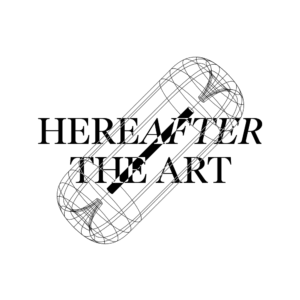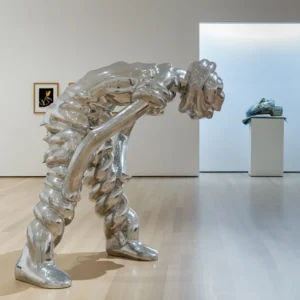Jeff Koons is a prominent yet polarizing figure in the contemporary art scene worldwide. His art incorporates subjects such as commercialism, consumer culture, advertisement, and of course, Pop Art. In very few pieces does he celebrate these themes as vigorously as in Pink Panther.
In 1988, Jeff Koons presented his Banality series, which made him the celebrity figure that he is today. He was very aware of the new twist that this series gave to his career – in an interview in 2009, he said: “I just felt like I became an art star with my Banality show”.
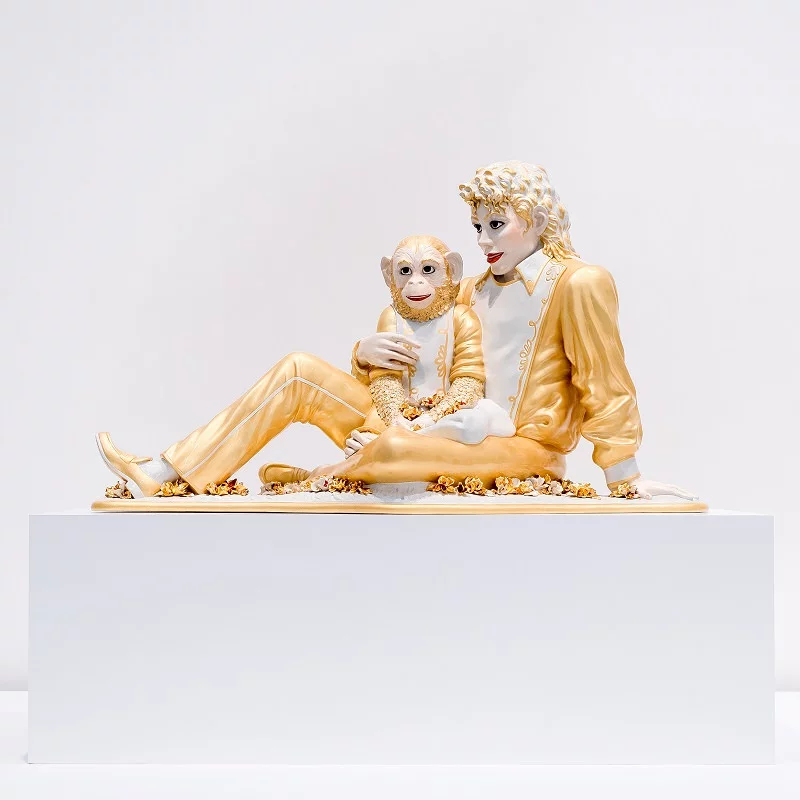
What is special about this series is that when it was first exhibited, artworks were simultaneously presented to the public at three different galleries (Sonnabend Gallery in New York City, Donald Young Gallery in Chicago, and Galerie Max Hetzler in Cologne). Koons had created several editions of each sculpture (including Pink Panther), which made the synchronous exhibitions possible.
The artist ensured public coverage of his works by placing advertisements in major trade magazines. It is important though not to see this campaign just as a promotion strategy. By posing next to his pieces, the artist tried to incorporate his own persona into the artworks, deepening the meaning of the collection.
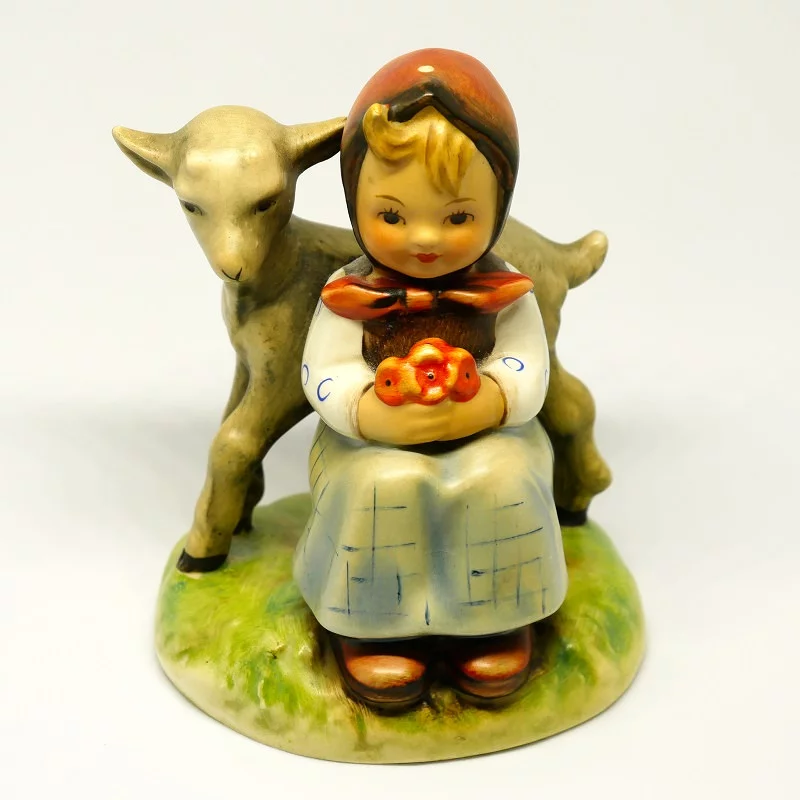
The iconic pieces from the Banality series were inspired by the Hummel figurines, porcelain souvenir items that became popular collectibles after WWII. Koons’ porcelain works featured famous pop culture figures like Pink Panther, Garfield, and Michael Jackson. He also made references to masterpieces like John the Baptist by Leonardo Da Vinci.
Shortly after its unveiling, Pink Panther became an immediate sensation of the collection. This 41-inch porcelain piece depicts a blonde bare-breasted woman, Jayne Mansfield, a famous B-list Hollywood actress. She is in a mint-green dress, wearing heavy make-up and luxurious jewelry, while her nails are painted red. The way she tilts her head creates the impression that she is addressing an audience with grace and playfulness.
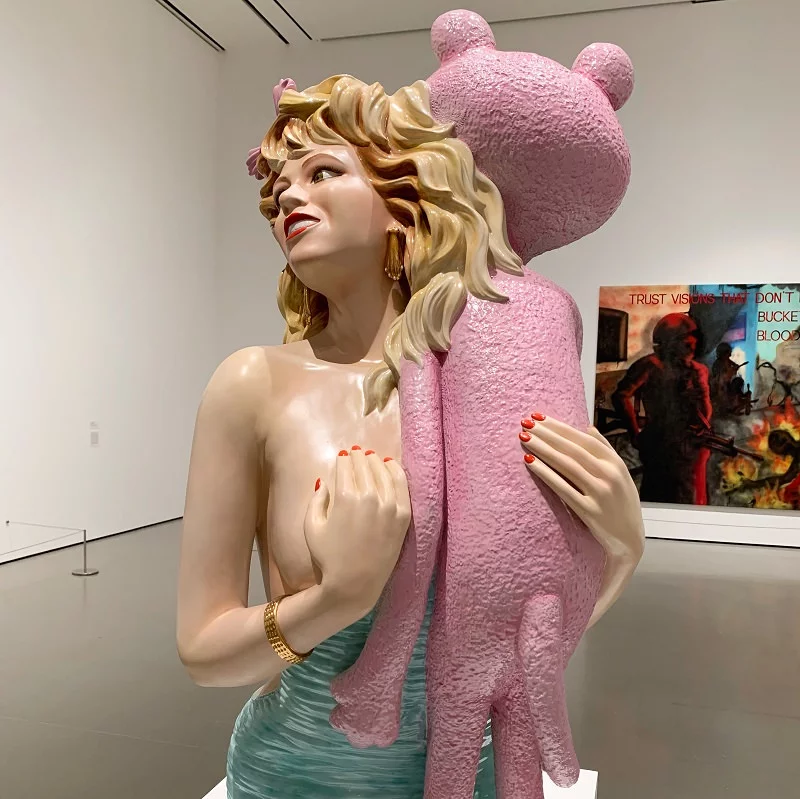
While only Mansfield’s upper body is visible to the viewer, the Pink Panther is shown in full. His body hugs her (using Koons’ own words, “surrenders to hers”), while his chin is resting on her shoulder.
This eroticism between the two figures is unapologetically apparent, and is connected to Koons’ intention of presenting the Pink Panther as a female masturbation aid. Sexuality is a dominant pillar, and a field of experimentation for Koons. His signature line “If I think of the word beauty, I think of a vagina” leaves no room for doubt about it.
Jeff Koons, maybe nostalgically, also calls attention to our cultural history in this piece through a 1963 cartoon and a Hollywood actress. Koons takes these two pop culture characters as his starting point, and then strips them away from their original context. Such re-contextualization is established through the use of humor.

Another angle to look at this piece is how Jeff Koons, the king of kitsch, turns these two pop culture figures into high art. Essentially, Koons takes advantage of familiar images and elevates them into an artwork to be displayed in the galleries of prestigious museums.
In his world, the borderline between low and high art is intentionally left blurry. He wants us to think about whether what we see is of high or low value, or by extension, what these terms actually mean.
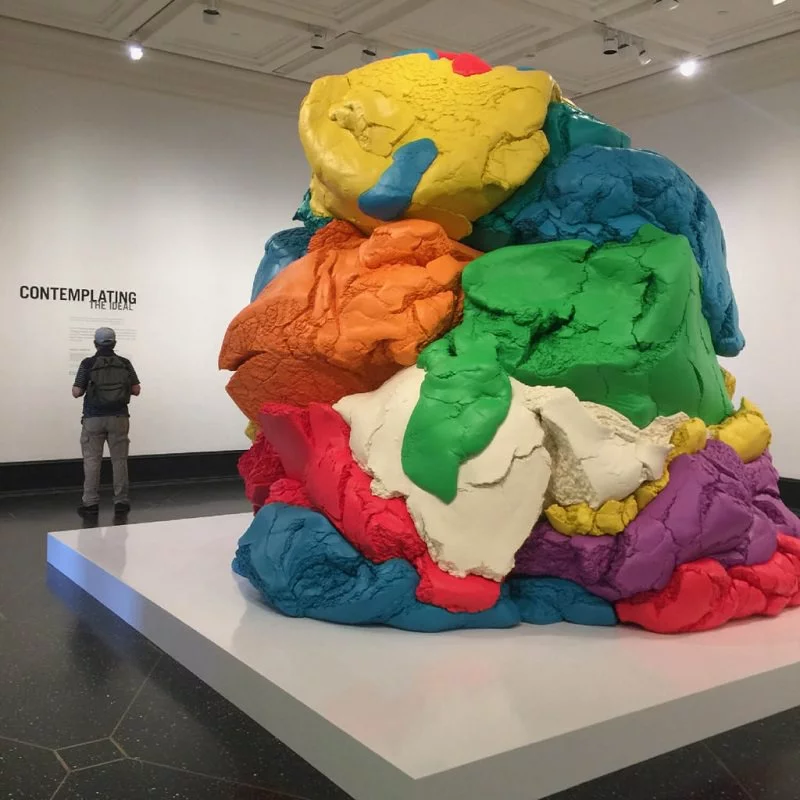
By leaving interpretation of his work to the viewer, Jeff Koons is questioning the meaninglessness of art and life. The artwork can be seen as a reflection of a society that lacks depth, and is constantly wavering between materiality and meaning.
Pink Panther, at its core, is a postmodernist piece. It celebrates randomness without believing in a higher meaning or an absolute truth. It steps into the world, and presents itself with playfulness, jumping from one theme to another, wrapping up everything in an intertextual delirium. It appropriates cultural elements and undresses them from their original meanings, reaching the point of actually doubting its own self.

